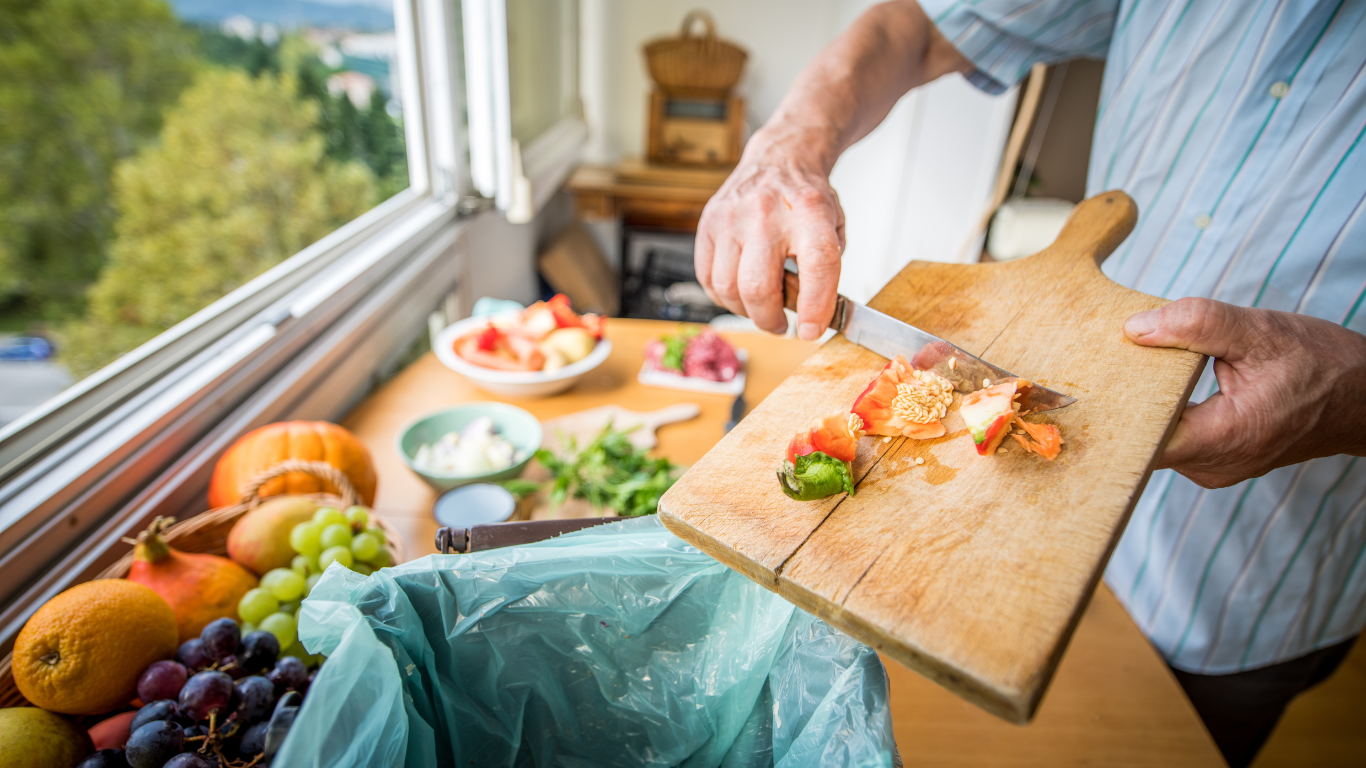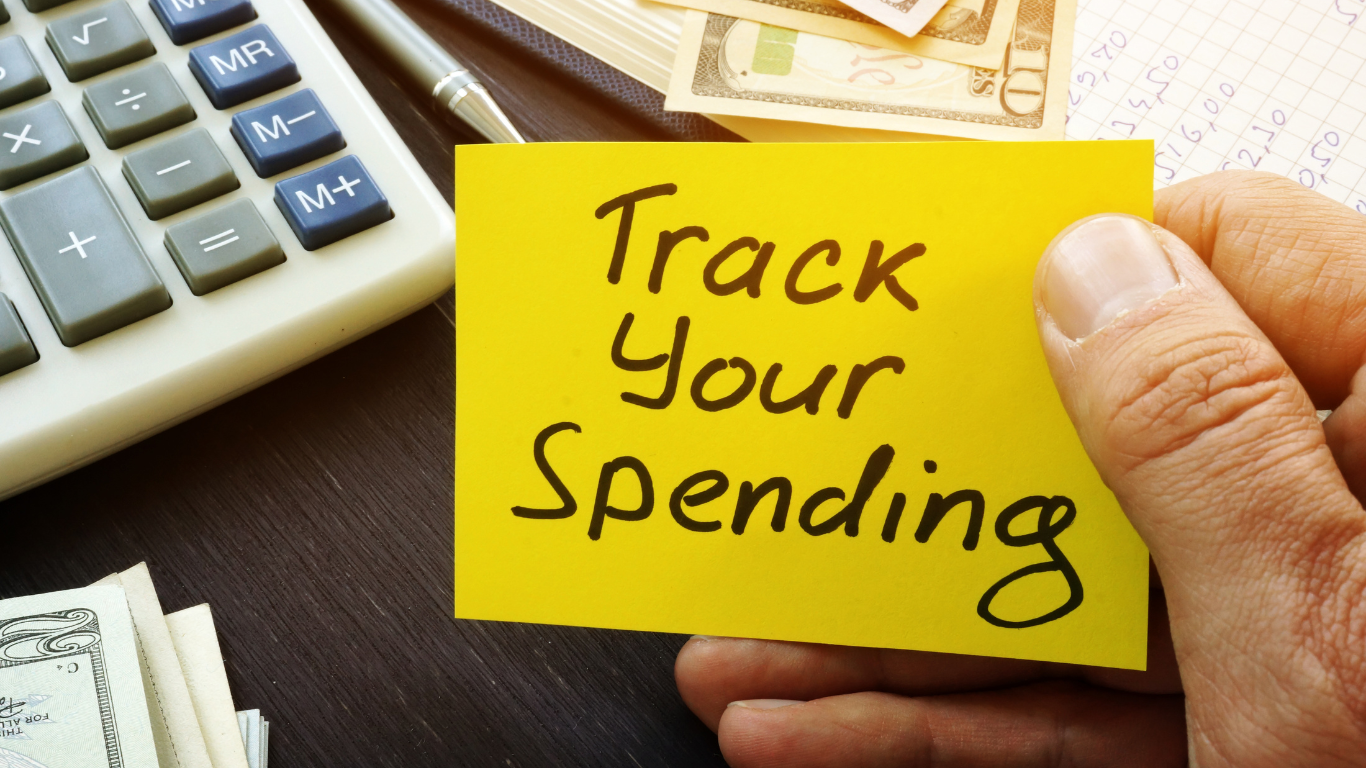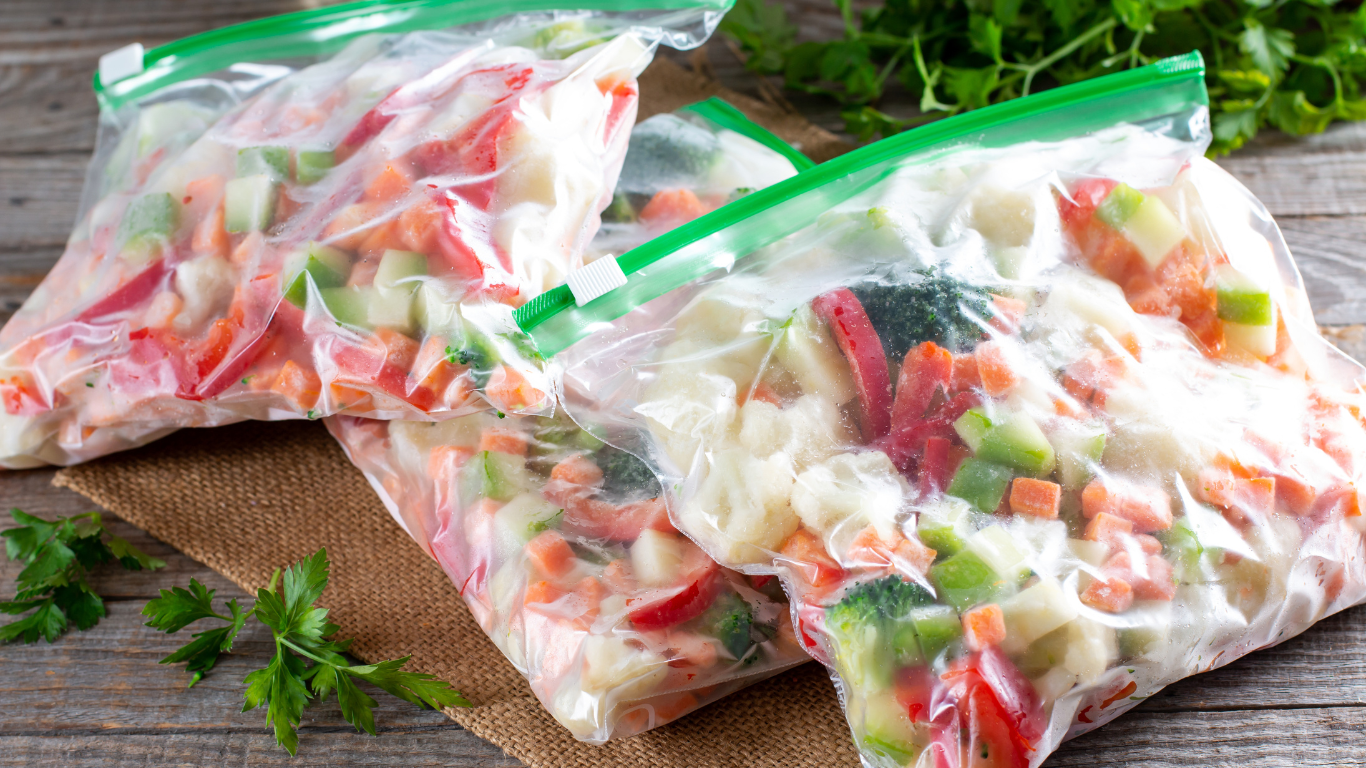How to Save Money on Groceries

Save Big on Groceries: 17 Easy Tips
In early 2025, food prices in the U.S. rose by 3.0% compared to last year, with groceries (food at home) seeing a 1.9% increase. Experts predict food prices will continue to rise by around 3.4% throughout the year. With these rising costs, finding ways to save on groceries has never been more important. We've researched the best ways to cut your grocery costs. Here’s what we discovered.
Takeaways
- Plan & Use Tech: Make meal plans and use apps for the best deals and loyalty rewards.
- Shop Smart: Avoid hungry shopping, buy seasonal produce, and shop alone to stick to your list.
- Save Every Day: Use cash for better control over your budget and stock up only during sales.
- Spend Wisely: Shop on Wednesdays, compare store prices, and buy in bulk wisely.
- Choose Well: Go for less perfect produce at lower prices and always check unit prices for the best deals.
1. Minimize Food Waste

In the U.S., an American family wastes more than %20 of the food they buy, which costs $1,800 annually. Here are some tips on how to cut down on food waste and save money.
- Expiry Dates: Be skeptical. Some foods are still okay to eat even after their expiration date. Use your judgment when checking the quality and safety of the food.
- Meal planning: Planning your meals ahead of time can help you avoid last-minute cooking, save money on groceries, and save lots of time. Here is a great meal-planning template from a reputable source like the U.S. Department of Agriculture.
- Shopping List: Once your meal planning is ready, it's time to make a shopping list. It will help you buy the right and healthy foods.
2. Get the Best Deals by Using the Technology
You can use Checkout51 to unlock savings on groceries through coupons and cashback offers. This app also offers free samples from popular restaurants and supermarkets like KFC and Starbucks. Trying these samples before committing to a purchase helps you avoid disappointment and waste and also lets you taste and test products in miniature form. Follow grocery stores on social media and sign up for alerts to stay updated on the latest deals and free sample offerings.
3. Maximize Grocery Rewards: Programs & Credit Cards

Consider using grocery credit cards that offer cashback on purchases. Join store loyalty programs at retailers such as Walmart and Kroger for exclusive savings on groceries. Look for a card that matches your shopping habits and use it at the right stores to maximize your savings.
Another way to save money is to join loyalty programs at your favorite stores, such as Walmart, Target, and Kroger. These programs offer benefits like free delivery for groceries, discounts on gas, and information about in-store promotions.
4. Avoid Shopping When Hungry
Have you ever gone on a shopping trip while hungry? If so, you may have noticed that your urge to eat everything in sight can lead to overspending on food. Shopping when you're hungry is one of the easiest ways to drive up your grocery bill. So, what's the solution? It may sound simple, but eating before you shop can make a big difference. Even something as small as a banana or breakfast bar can help you resist the temptation to buy unnecessary items and save money.
5. Track Your Expenses

Track your spending to understand where your money is going and where you can cut back to improve your finances. You can use spreadsheets or budgeting apps to monitor your spending. One popular budgeting app is Mint Spending Tracker.
6. Freeze Your Meals Now to Save Time Later

Freezer meals are a great way to save money and reduce stress. You can find recipes online, prep meals for the week in a couple of hours, and then take them out of the freezer every night. This way, you'll save time and money and avoid drive-thru temptations. It's a great tip for busy budgeters.
7. Shop in Season: Save Money & Eat Fresh
One easy way to do that is by shopping for produce in season. When you purchase fruits and vegetables that are out of season from your local grocery store, you may end up paying more for less fresh or flavorful produce. Instead, wait until the summer to make your favorite mango salsa recipe, and only buy fresh produce when they're in season to avoid high food prices. This simple tip can help you save money while still enjoying delicious, high-quality produce.
8. Shop Alone
Shopping alone can be a great way to stay focused and stick to your budget. When you're with friends or family, it's easy to get sidetracked and spend more time in the store than you need to. Going solo lets you pay careful attention to your grocery list, avoid distractions, and reduce impulse buys. This is especially important in today's economy, where shrinkflation affects grocery budgets. You can ensure every dollar counts by being mindful of spending and shopping alone.
9. Sign Up for Newsletters
Many grocery stores offer email newsletters that provide subscribers with exclusive discounts, coupons, and early access to sales events. Signing up for newsletters is the way to stay ahead of the game and be the first to know about the latest deals and promotions.
10. Wednesday is the Best Day for a Grocery Shop
According to the Taste of Home, Wednesday is the best day to save money on groceries. The stores are less crowded mid-week, and for the freshest items, go when the store opens or just before it closes. Avoid going around 5 p.m. when there is an after-work rush. Most stores start and end their weekly promotions on Wednesdays, which means double the money-saving opportunity.
11. Compare Prices Across Stores
To save money on groceries:
- Compare grocery prices across discount stores and shop where you find the best deals.
- Use apps like Flipp or Instacart to compare prices from several different merchants.
- Consider visiting different stores on different days of the week to get the best deals.
12. Buying In Bulk
Buying groceries in bulk from warehouse clubs like Sam’s Club, shopping at the cheapest grocery stores, or choosing organic and specialty items at Whole Foods is a smart way to save money. When you purchase items in larger quantities, the price per unit is typically lower, so you get more for your money.This approach also means fewer trips to the store, saving on transportation costs and reducing the chances of making an impulse purchase. Buying in bulk can save shoppers 27% on average across 30 common products, according to LendingTree analysis.
13. Paying with Cash
Paying in cash can be a helpful method for saving money because it makes the act of parting with money more tangible and real than using a credit or debit card. When we make purchases with a card, we don't see the actual money leaving our account, and it can be easy to overspend without realizing it. However, when we use cash, we can physically see the amount of money we are parting with, and that can prompt us to be more mindful of our spending habits.
14. Shop at Closing Time in the Farmers Market

Shop at the farmers market at the end of the day to get fresh, high-quality produce at a discounted price. Vendors usually want to sell their remaining produce before closing, so if you time it right, you can score some great deals. By doing so, you'll get fresh, tasty produce and support local farmers in your community.
15. Stock Up On Sales
To make the most of your grocery budget, it's a good idea to stock up on the items you use regularly when they go on sale. To make sure you don't end up with goods that expire before you get to use them, check the expiration dates before you buy. By prioritizing the grocery items you use most often and planning accordingly, you can take advantage of sales for a lower cost, stretch your budget further, and put the extra savings into a savings account.
16. Compare Unit Prices for Smart Savings
When you're shopping, keep in mind that larger is not always cheaper. To make a smart choice, compare the unit prices of the products. You can find this price listed on the shelf tags below the product. It shows you the cost per pound, ounce, or liter so you can compare different brands and sizes easily. By choosing the item with the lowest unit price, you'll ensure that you get the best value for your money. This is especially helpful when buying staple items you regularly use. You can also use a unit calculator to determine the cost per unit.
17. Buy Ugly Produce
Many grocery stores sell ugly produce that is perfectly edible but may have cosmetic blemishes. These items are often discounted significantly and can be a great way to save money on fruits and vegetables. Imperfect Foods, Misfit Market, and Hungry Harvest are subscription meal boxes offering a more sustainable and eco-friendly option.